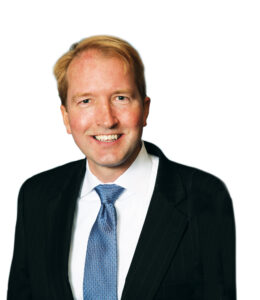
I met my wife, Claudie, at the Harvard Medical School vascular research lab. This was not a romantic environment by most standards (depending, I suppose, on your feelings towards Mike Conte). Many of the researchers were general surgery residents invigorated by this temporary reprieve from the horrors of their (pre-80-hour work week) training programs.
My friend Evan Deutsch pinned a map of Oslo above his desk, letting the other poseurs know who was destined for greatness. But, as the kids say, we were all NPCs (non-player characters) living in Claudie’s story. She would roll in around noon, latte in hand, opining on her self-diagnosed insomnia. I once considered suggesting that she would fall asleep more easily if she simply woke up earlier. It was never my sense, however, that she was seeking enlightenment.
Everyone knew not to book the conference room over lunch, as that was Claudie’s time to spread out the current issue of the Boston Globe and carefully consider the new shoe offerings at Filene’s. My predominant feeling towards Claudie during this time was jealousy. As the clinical fellow, I had minimal time in the lab and needed to focus on boring database research. Claudie, however, had the prize project: a study of the effects of stem cells on intimal hyperplasia. But this was 2003, and we had not learned how to make those pesky stem cells stick to the endothelium. With her research time dwindling, Claudie needed to get a few projects to the finish line. So, as PubMed can attest, our relationship began studying minor amputations and bypasses in transplant patients. Who needs romance?
The prospect of marrying another physician was terrifying. How would this all work? At the time, there weren’t even many women in vascular surgery, never mind married couples. Claudie never seemed hesitant, though. I thought, well, she is incredibly bright and seems always to have a plan; she must have thought this through. Well reader, she had not. Twenty years later, it has been a life of complications. A life of extremes. And, primarily due to my chosen spouse, a life of insane, unforced financial peril. But despite my decades of experience, I am definitively not an expert in physician marriages. My insight is more akin to one of my patients with a 9.5cm aneurysm. I don’t really know what is happening, but it’s probably going to kill me.

A few months ago, my friend and SVS President Matt Eagleton spurred my interest in looking at the data behind surgeon marriages. Matt was preparing a talk on the topic and asked if we had any insight or advice. Matt also made the mistake of asking for a picture of the two of us, not knowing that my wife guards these with the determination of a North Korean press secretary. After reviewing her photo selections, it appears Claudie’s criteria are that she is wearing something she likes, and I look like the cover of The Complete Idiot’s Guide to Looking Like a Doofus.
Surgeons marrying surgeons is a relatively recent occurrence. Halstead’s original residents were required to be single males. Like Catholic priests, they were bonded to their vocation. Marriage between surgeons has become much more common as more women enter the surgical workforce. According to census data, about 25% of physicians are married to another doctor. The divorce rate among these pairings is around 25%, which trails the 35% seen in the general population. A 1997 study of Johns Hopkins graduates found the specialties with the highest rates of divorce were psychiatry (50%!) and surgery (33%).
A 2008 American College of Surgeons (ACS) survey found that surgeons in dual-physician relationships experienced a higher incidence of career and work-home conflicts. This led to more depressive symptoms and a lower mental quality of life.
Among U.S. medical school surgery faculty, 40% of women and 29% of men have an academic physician partner. These couples are generally more productive, with higher numbers of publications and more leadership positions. They are also seen as more stable with longer tenure, likely because leaving would require finding two new opportunities.
On average, female physicians interrupt their careers for 8.5 months for child rearing, while, for men, it is less than four weeks. Unsurprisingly, male physicians have significantly more children than females. Female doctors who marry other physicians report working fewer hours and having more children. The tradeoff appears to be that they earn less money and are more likely to report that their family life substantially limited their professional life. In the end, though, female physicians married to other doctors do not report less success in achieving their career goals.
I have spent a good portion of the last decade studying the effects of burnout on surgeons. At the beginning of our careers, most of us perseverate over life choices such as where to live, what type of employment to seek, and when to have children. I am now convinced that the two most important decisions are your spouse and your work partners. Nail both choices and the rest tend to sort themselves out.
Surgeon-surgeon marriages will continue to grow in popularity as we change the demographics of our workforce. For now, though, the data is relatively limited. So, for the next issue, I have assembled an all-star team of married surgeons to offer advice, guidance and safety tips. Until then, please enjoy your holidays, and thank you for all of the interaction this year (even the haters!).
Malachi Sheahan III, MD, is Vascular Specialist medical editor.












